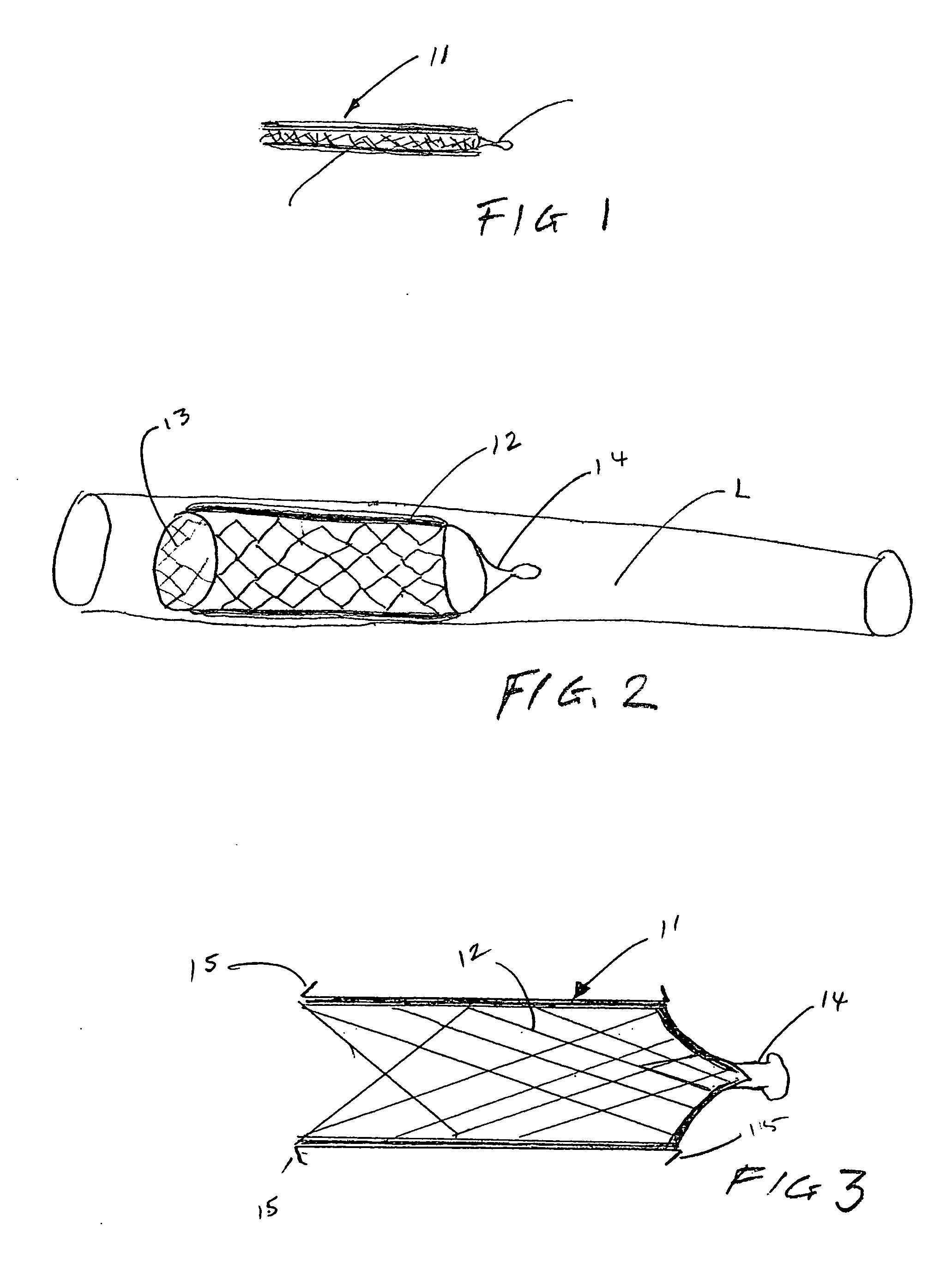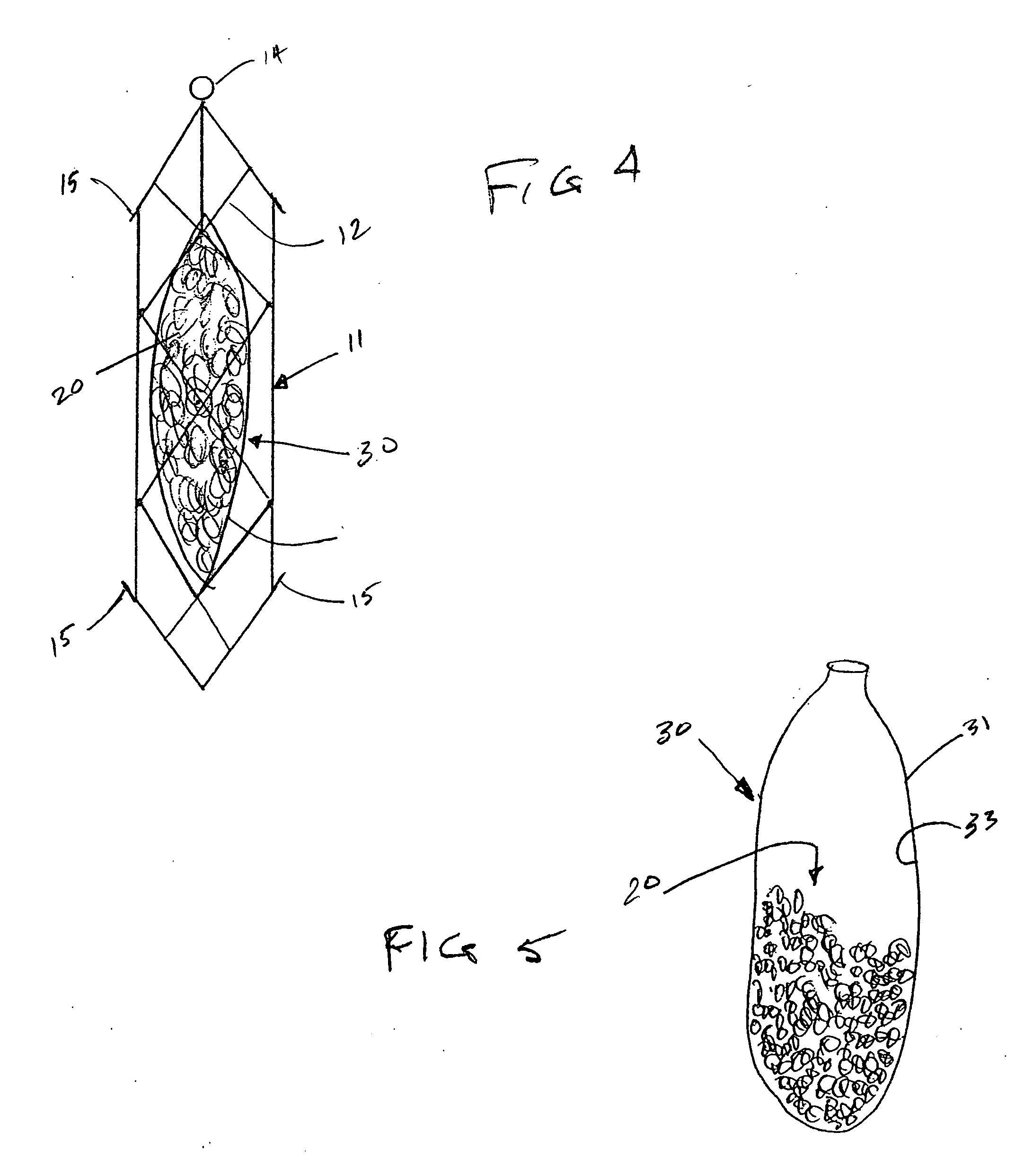Implantable systems and stents containing cells for therapeutic uses
a technology of stents and cells, applied in the field of implantable systems, can solve the problems of increasing the possibility of triggering infection in the host, limited methods and devices designed to combat teachings that include stents with contained cells, or cellular components, and achieves the effect of less invasiveness and increased infection chan
- Summary
- Abstract
- Description
- Claims
- Application Information
AI Technical Summary
Benefits of technology
Problems solved by technology
Method used
Image
Examples
Embodiment Construction
[0052] The present invention provides implantable systems for the treatment (including prevention) of a variety of disorders, such as, diabetes, leukemias, immune disorders, metabolic disorders, malignancies, hormone disorders, arthritis, hypertension, etc. The implantable systems of the present invention include a delivery device 10 comprising a carrier (e.g., stents, vascular grafts, stent graphs) and cells 20 (e.g., encapsulated cells, non-encapsulated cells, engineered cells), which can optionally be enclosed within containment vehicles 30. Such cells 20 are capable of responding to changing conditions within a host and producing one or more therapeutic agents in response to such conditions. The produced agents may have a therapeutic, preventative, or disease-modifying effect on the host.
[0053] The therapeutic agents are released from the cells of the delivery device upon the receipt of a stimulus, or contact of an endogenous signal or chemical, from the host (changes in blood ...
PUM
 Login to View More
Login to View More Abstract
Description
Claims
Application Information
 Login to View More
Login to View More - R&D
- Intellectual Property
- Life Sciences
- Materials
- Tech Scout
- Unparalleled Data Quality
- Higher Quality Content
- 60% Fewer Hallucinations
Browse by: Latest US Patents, China's latest patents, Technical Efficacy Thesaurus, Application Domain, Technology Topic, Popular Technical Reports.
© 2025 PatSnap. All rights reserved.Legal|Privacy policy|Modern Slavery Act Transparency Statement|Sitemap|About US| Contact US: help@patsnap.com



